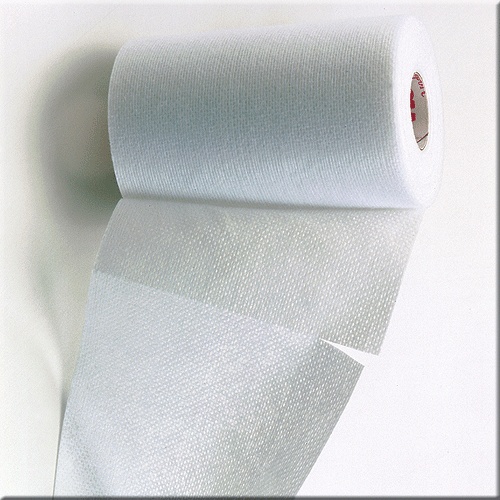
When you are standing in a pharmacy aisle or looking at an online medical supply store, it is very easy to be overwhelmed with the choices for medical tape. This will hopefully help you understand what 3M means by medipore, transpore, microfoam, etc. 3M makes high quality medical and surgical tape. More than likely, if you were in the hospital you have seen 3M tape. All the medical tapes listed in this article are hypoallergenic. They are not all latex-free.
Different Styles of 3M Medical Tape:
 Blenderm: Waterproof clear plastic tape, it is a flexible, occlusive tape that helps protect wounds from external fluids and from becoming contaminated. It is not listed as latex-free.
Blenderm: Waterproof clear plastic tape, it is a flexible, occlusive tape that helps protect wounds from external fluids and from becoming contaminated. It is not listed as latex-free.
Durapore: Silk-like strong backing, with high adhesion to dry skin. This is a strong tape that conforms to the unique shapes of the body as well as bulky dressings. Can be used with heavier tubing and small splints. It is latex-free.
Medipore: Soft cloth surgical tape, this is a breathable, gentle, conformable tape that comes in easy tear, perforated rolls. Used for larger, bulky dressings where the skin may stretch and can be used for repeated taping because it is so gentle. This is not listed as latex-free.
Microfoam Foam Tape: Water resistant foam tape that stretches in all directions. Works well for compression applications and securing dressings in challenging areas. Highly conformable closed cell tape. It is latex-free.
Micropore Paper Tape: Breathable, gentle tape with a rayon backing. This is a general dressing tape that works great for at-risk and fragile skin. Paper tape can be used for repeated taping on the same area of skin. It is latex-free.
Transpore Plastic Tape: Clear tape with easy bi-directional tear. This tape is perforated polyethylene film that very easily tears into very thin strips. Great for securing tubing. It is not latex-free.
Tips for Making the Best Use of Medical Tape:
 Touch the sticky part of the tape as little as possible. When you place the medical tape down, apply even and gentle pressure to the top of the tape to ensure complete contact with the skin. Gentle but firm strokes along the entire strip of tape will help the tape come into complete contact with the skin. This helps keep the tape edges from rolling or losing adhesion. Most adhesives stick to clean, dry surfaces better so try to minimize moist conditions as much as possible. Be careful when choosing soaps and lotions, a lot of them will prevent tape from sticking because of the oils and emollients that are used. If the adhesive is bothering your skin, you can use a skin prep like 3M Cavilon barrier film. Always allow the film to dry completely before applying the medical tape. Remember, your skin should be healthy and tape should not be making it less healthy. Always consult your medical team if you are concerned for any part of your health.
Touch the sticky part of the tape as little as possible. When you place the medical tape down, apply even and gentle pressure to the top of the tape to ensure complete contact with the skin. Gentle but firm strokes along the entire strip of tape will help the tape come into complete contact with the skin. This helps keep the tape edges from rolling or losing adhesion. Most adhesives stick to clean, dry surfaces better so try to minimize moist conditions as much as possible. Be careful when choosing soaps and lotions, a lot of them will prevent tape from sticking because of the oils and emollients that are used. If the adhesive is bothering your skin, you can use a skin prep like 3M Cavilon barrier film. Always allow the film to dry completely before applying the medical tape. Remember, your skin should be healthy and tape should not be making it less healthy. Always consult your medical team if you are concerned for any part of your health.



